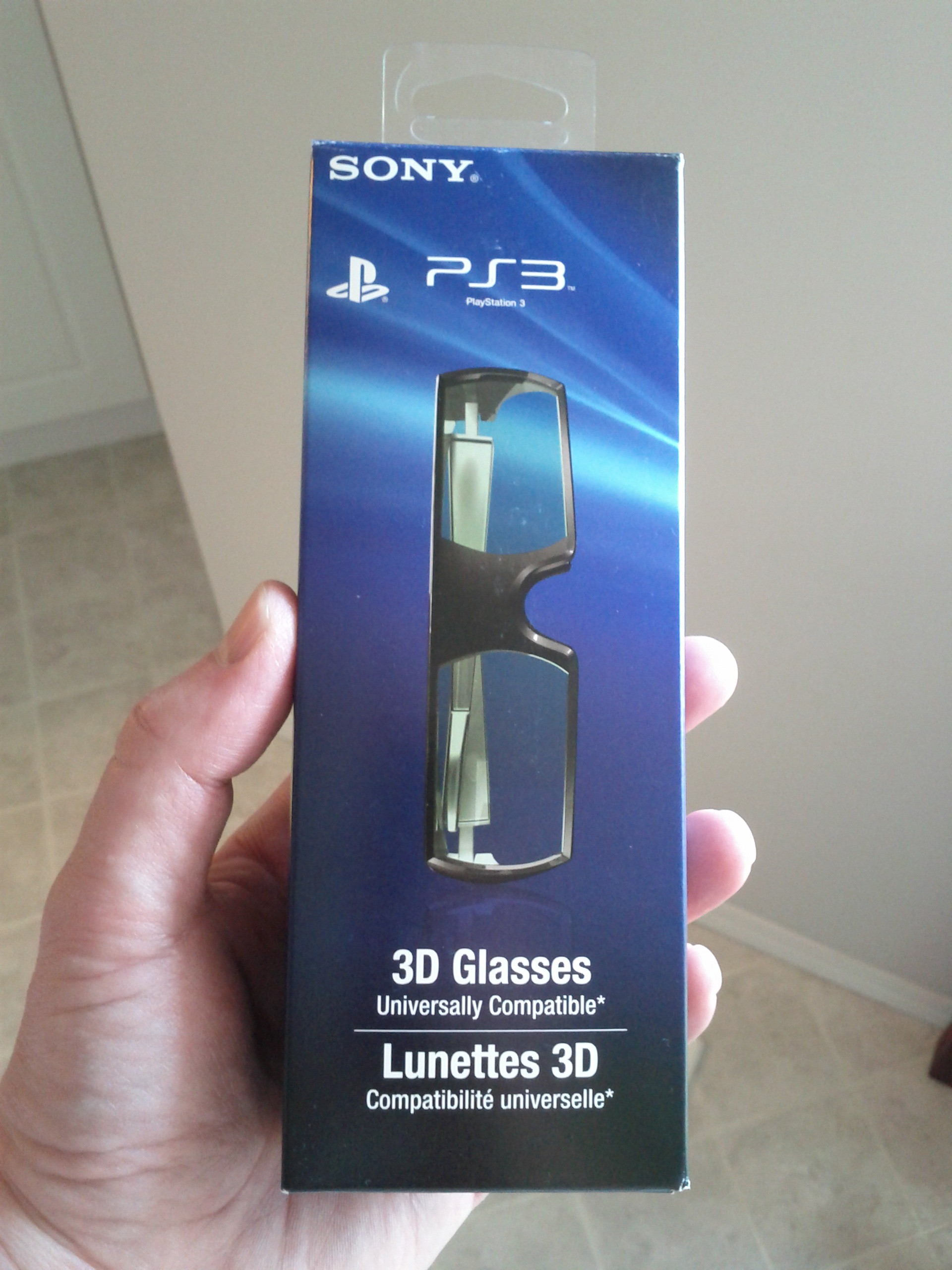-
Evaluating the Pulse Sensor Amped (Failure)
04/07/2014 at 22:02 • 0 commentsTo measure pulse / heart rate, I tried out the Pulse Sensor Amped.
So far I can get results from either my fingertip or earlobe, with the fingertip being much more reliable - but moving my finger screws up the readings. Other finger locations (e.g. back) are not reliable. Having the sensor on a fingertip gets in the way of "doing things with your hands" so it's not suitable for a sensor that silently and invisibly watches you in the background.
The earlobe location works but looks totally stupid so it isn't an option either. I was really hoping to use my sternum/chest but readings don't work there. So far things don't look great. The sensor is expensive at $25, is not terribly reliable, is limited in the body locations on which it'll work, and generally the best I can say is that it mostly does a job that nothing else out there can do for a hobbyist price point.
The jury's still out but unless something changes it doesn't look like this sensor will make it into the final design (or if it does, it will be in an exhibitionary/experimental manner only.)
-
Sensors Decided
03/28/2014 at 20:44 • 0 commentsThe following sensors have been ordered and will be used for development. They each have their own way of detecting conditions that may indicate Peril.
Temperature sensor - sudden shifts of temperature up or down may indicate Peril Pulse sensor - a rise in pulse rate may indicate stress, therefore Peril Ambient Light sensor - sudden shifts in light levels (sudden darkness, sudden light) may precede Peril Sound Detector sensor - sudden loud noises or a sudden sound when there was previously silence may indicate Peril - (TBD) Galvanic Skin Response - can be built from workbench supplies if needed. Skin conductivity increases when sweat glands activate, due to stress. Good indicator of actual or subconscious Peril.
- Accelerometer - to detect sudden movements; sudden movement on the wearer's part is a pretty good indication of Peril. (Added 2014-04-07)
-
Interface between glasses and sensors - Kimmy the Cat casts deciding vote
03/27/2014 at 02:30 • 0 commentsThis is a prototype and also development hardware, so it won't be size-optimized. Size-optimizing is usually the opposite of "easy and accessible to work on".
The sensors will be separate from the glasses, allowing development to happen in a reasonable fashion while leaving the known-good part (the glasses, so far) separate.
The interface between the glasses and the peril-sensor package can be wired (easy, reliable, cheap) or wireless (more expensive, more complex, possibly not feasible.)
Wireless is tempting. There is a small amount of space inside the glasses frame where the PCB goes. Power is also required. There is room for a small li-po cell but space is very limited -
none of the wireless units I know of will fit in that space (never mind the microcontroller most of them need as well.) Wireless looks like a nonstarter at this stage of the game but tempting enough that I spent time investigating the options. They weren't encouraging. Whether to go wired or continue spending our limited time investigating further was put to a vote amongst the project members.
Should options for making the interface between glasses and sensors wireless continue to be explored? Yes, No, or Abstain
- Colabot the AI chat bot: Abstain (noncommital so counting it as 'Abstain')
- Me: No (already spent enough time on it)
- Kimmy the Cat: voted No
![]()
2 votes no, 1 abstain.
The glasses will have a wired interface to the peril-sensing sensor box. -
Triggering the LCD lenses - Success
03/25/2014 at 01:57 • 2 commentsThe glasses have been disassembled and a basic means of triggering the LCD shutters has been determined.
Each LCD lens has a small mylar ribbon connector going to the main PCB. There is one at each corner.
For each connector, the inner contact (nearest the nosepiece) is "+" and the outer contact (nearest the lenses) is "-".
A positive voltage through a 1k resistor (with ground on the other contact) was observed to trigger the LCD shutter on the matching side. A resistor was used for some basic current limiting - a minimal nod towards protecting the hardware from something going amiss.
3V was sunglasses-dark, 5V was nearly opaque. Reducing the resistor value had some effect on the observed darkness of the triggered lens, but not as much of an effect as changing the voltage. The LCD triggering appears to be primarily voltage-controlled.
A brief experiment using PWM to drive the trigger signal yielded interesting results. Using an Arduino, a lens was triggered with a 50% duty cycle [via analogWrite(lcdShutter,127) ] and the lens was observed to be darkened less, and the tint appeared even and stable. Voltage level has an effect on LCD lens darkness, but PWM appears to be a much better way to control "tint level".
Of course, the Peril-Sensitive Sunglasses have no need of half-measures so we won't be needing that, but it's nice to know.
This gives us enough to work with. We know how to cont
rol the shutters now. -
Disassembling the Shutter Glasses
03/24/2014 at 15:52 • 0 commentsThe Sony PS3 3D Shutter Glasses are disassembled by removing 6 very small cross-headed screws, then pulling the glasses apart into separate halves.
Two screws hold in the nosepiece.
Two more are on each side, by the hinges. Fold the arms to expose them.
2 on the left, 2 on the right. With all the screws removed, carefully pull the back "half" of the glasses frame away from the front "half" of the frame. The center part will be held by a bit of glue.
This is a tedious process but it's doable.
The "front" half of the frame contains all the worky bits. A small rechargeable li-po cell and main circuitboard with IR receiver are in the center over the nosepiece. On the right is the power switch.
With the glasses disassembled (and some degree of confidence in re-assembling them), the next step will be to figure out how to trigger the LCD shutters on demand.
(The existing electronics are not likely to be useful, since they'll be all about detecting a valid IR video sync signal and correspondingly shuttering the left and right lenses for very brief periods of time.)
-
Hardware followup: Sony PS3 Active Shutter glasses
03/23/2014 at 00:47 • 0 commentsThe Sony 3D active shutter glasses for the PS3 have been chosen to follow up as one of the basic pieces of hardware. They look reasonably normal, and the price is right - only 9.99 at a local shop.
![]()
Next stage of the project involves reverse-engineering the glasses to determine whether it is possible to trigger the LCD shutters on demand, and whether it is possible to hold them in an opaque state on demand.
Both of the other members of the project - the AI chatbot and Kimmy the Cat - agree with this course of action.
-
Sensors discussion: how to detect peril
03/21/2014 at 22:44 • 0 commentsSince telepathic technology is not available, we're going to have to settle for detecting Peril indirectly.
After brainstorming sensor possibilities it is clear that in at least some cases, Peril will be detected only once it has actually occurred. In these cases, we have to settle for the Peril-Sensitive Sunglasses producing a reactive calming effect (due to blocking out the distressing sights) rather than a proactive one.
However, in at least some cases the activation of the Sunglasses *will* be pre-emptive. For example, your pulse might rise not as a result of actual Peril being presented, but in response to a "gut feeling" that you're not fully conscious of. In these cases, the Peril-Sensitive Sunglasses will be proactive rather than reactive.
Best ideas for sensors so far:
- Measure GSR (galvanic skin response - i.e. how sweaty you are; increase = under stress, therefore peril?)
- Measure pulse (increased pulse = possible peril imminent)
- Measure ambient sound / volume (loud noises = possible peril?)
- Measure ambient light levels (sudden lighting changes = possible peril?)
- Detect things being pointed at you? (big ?? here)
-
Base: active 3D shutter glasses
03/21/2014 at 22:33 • 0 commentsLCD shutters are the best bet for the Peril-Sensitive Sunglasses.
It's not cost-effective (and would be re-inventing the wheel) to re-create LCD shutter glasses so the base of the project will involve hacking an off-the-shelf pair.
Peril-Sensitive Sunglasses
A version of the Peril-Sensitive Sunglasses (as described by Douglas Adams in The Hitchhiker's Guide to the Galaxy)
 Minimum Effective Dose
Minimum Effective Dose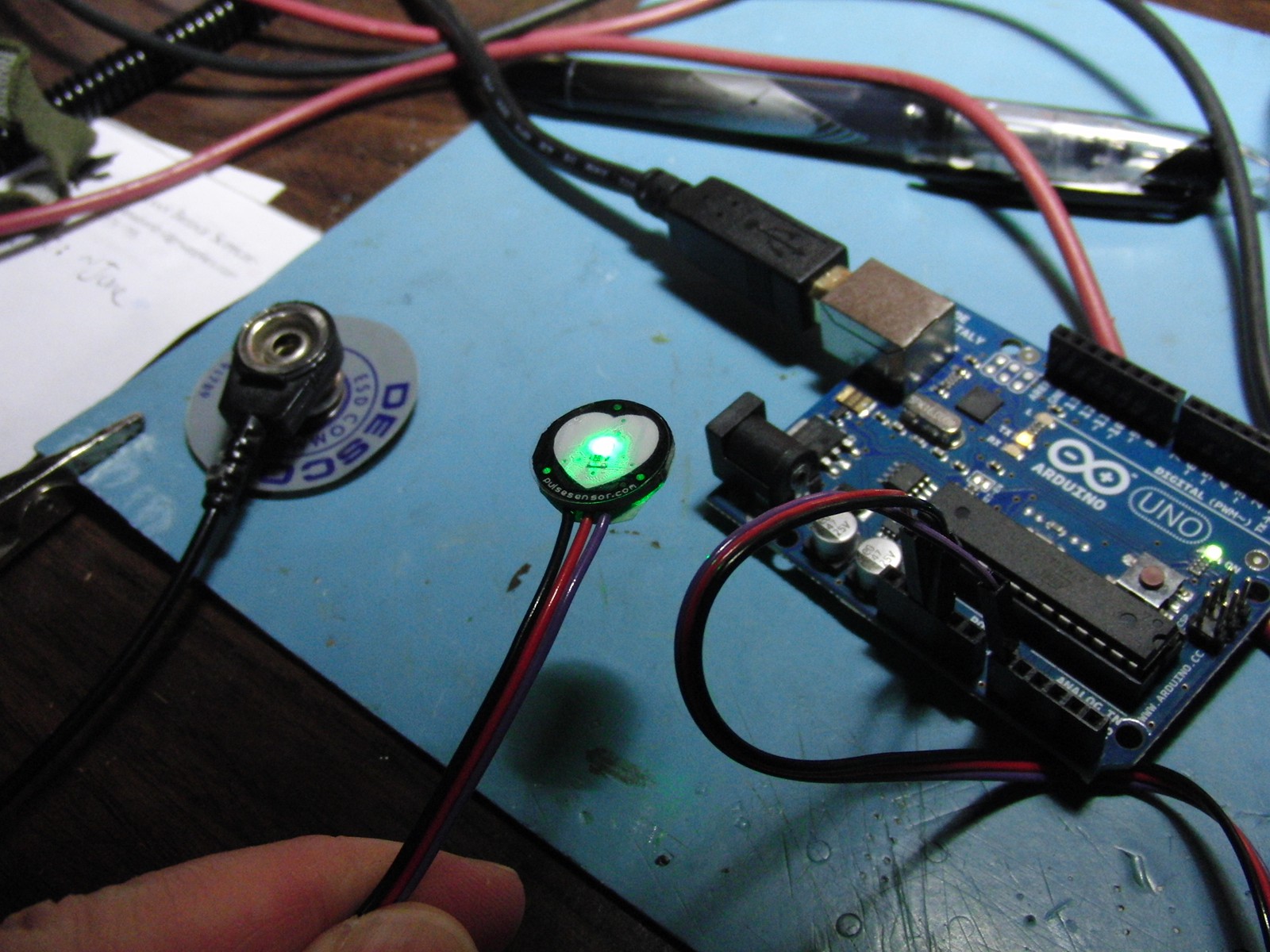

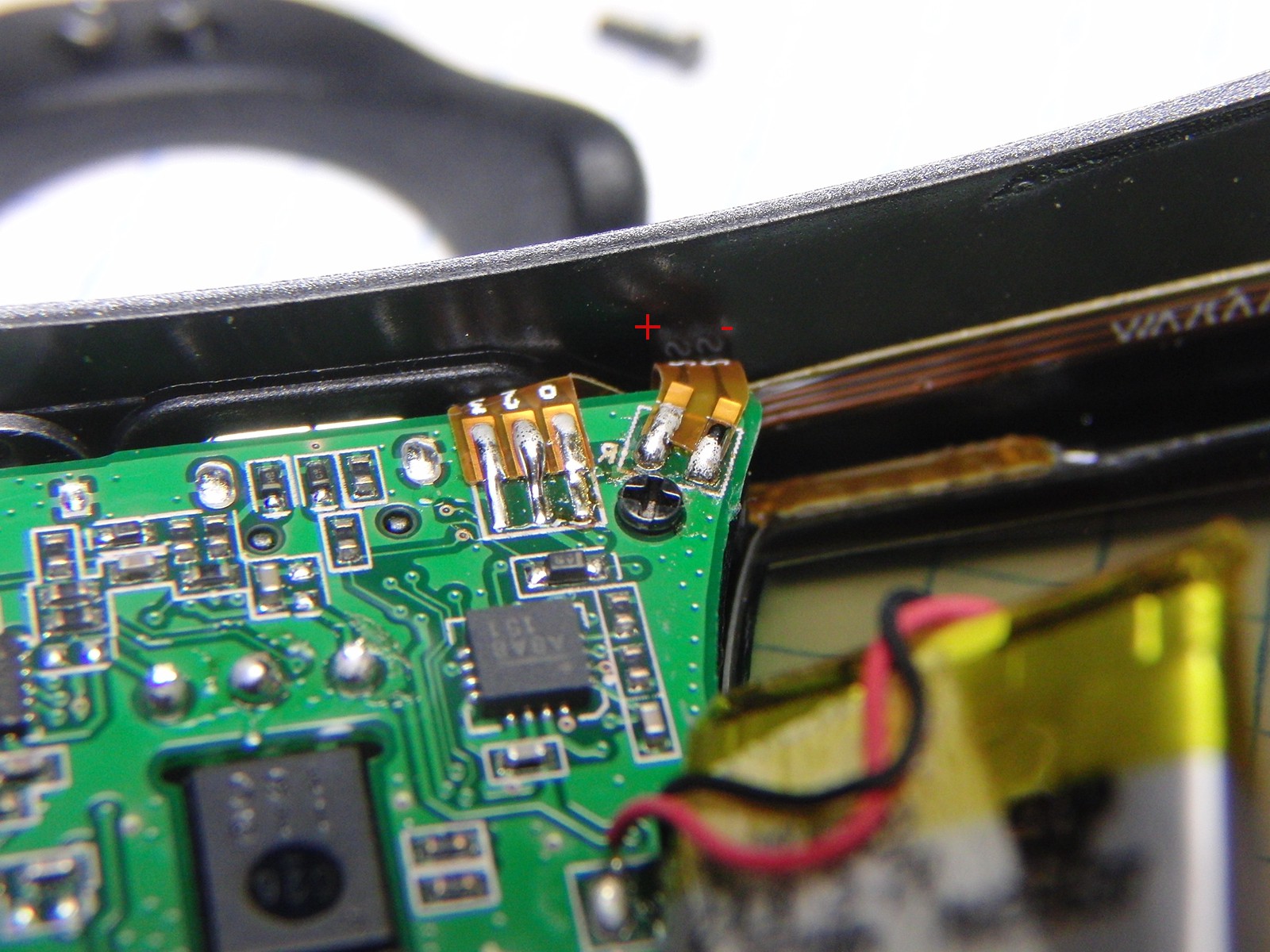
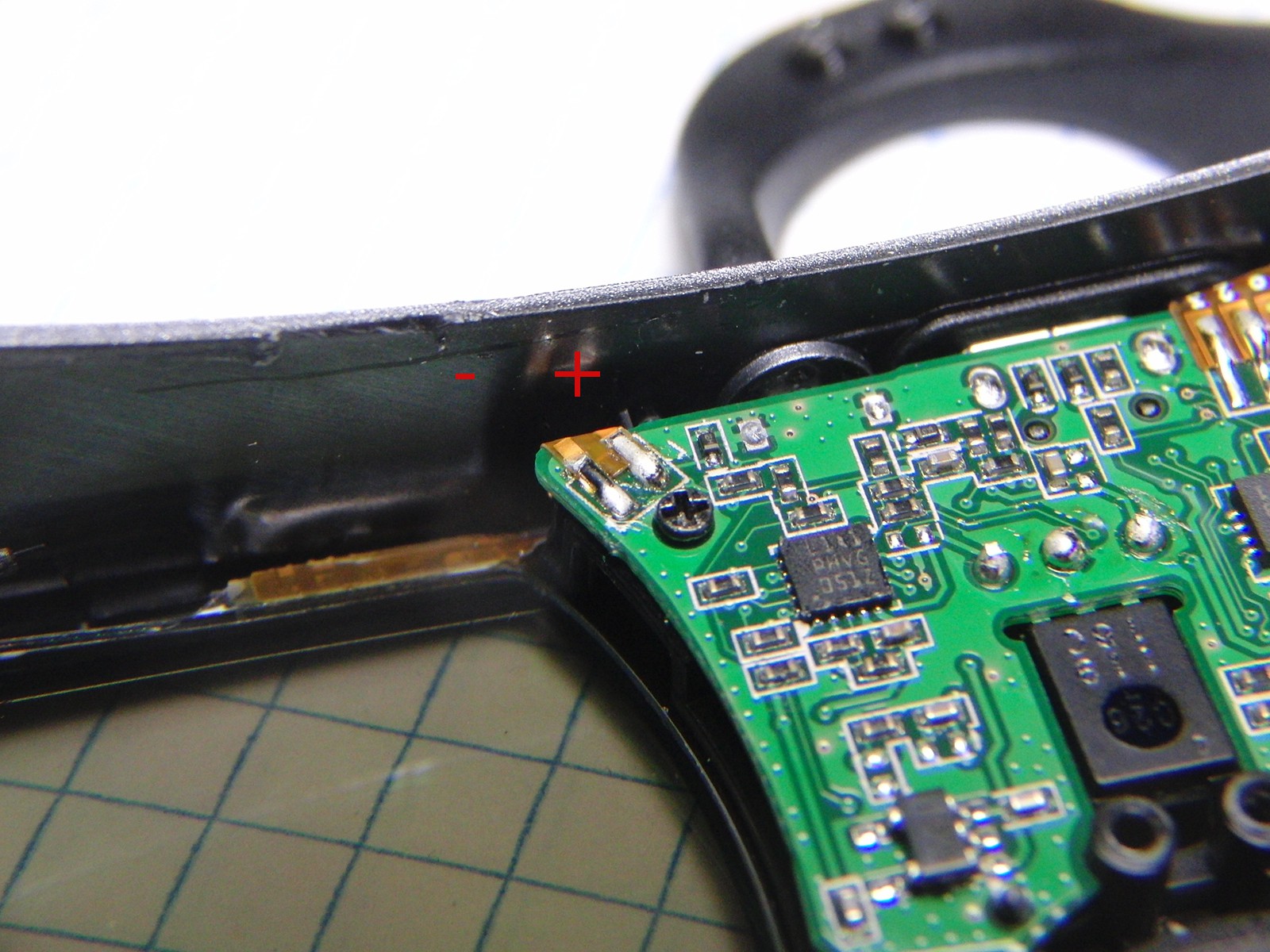
 Two more are on each side, by the hinges. Fold the arms to expose them.
Two more are on each side, by the hinges. Fold the arms to expose them.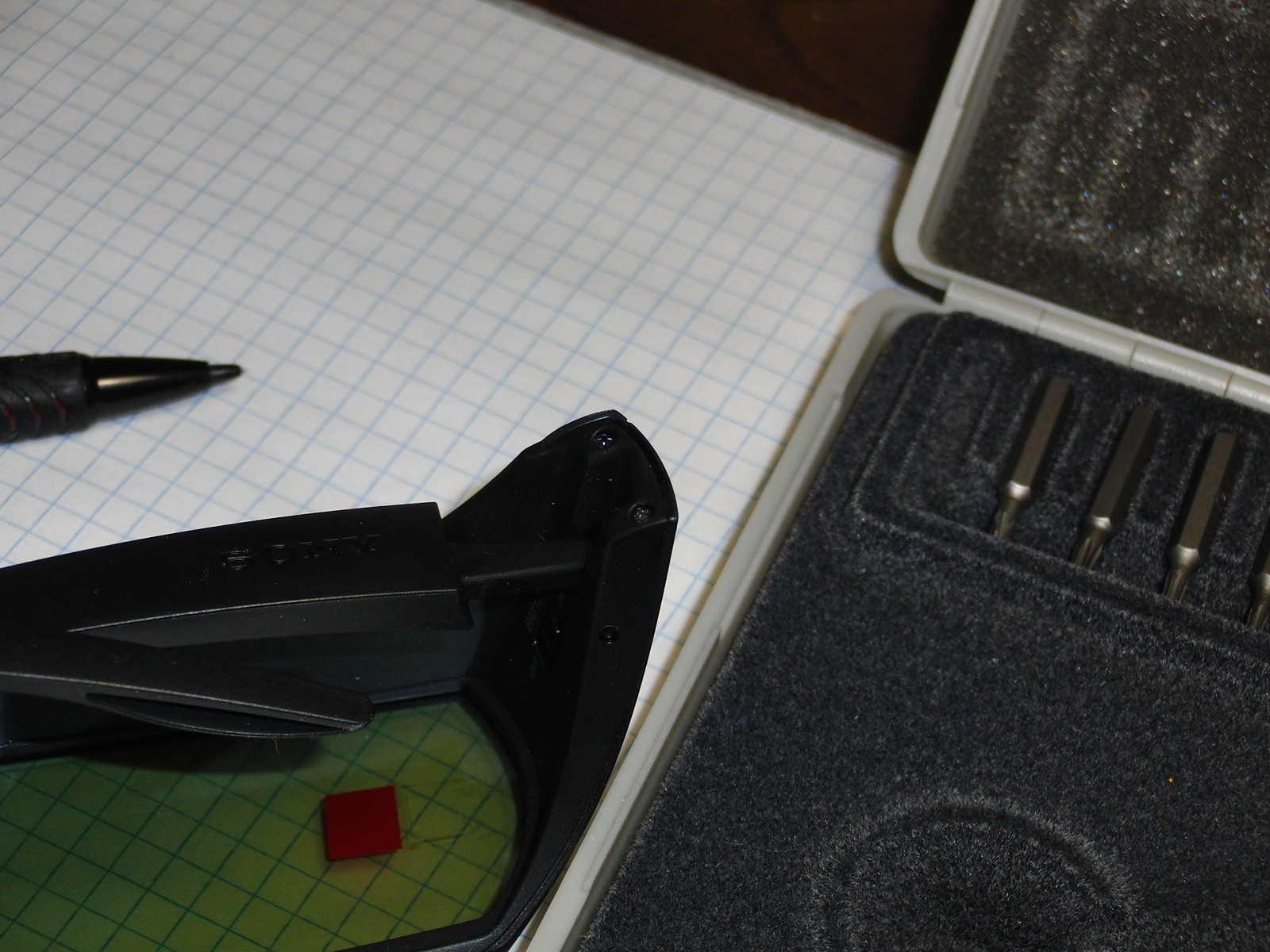 2 on the left, 2 on the right. With all the screws removed, carefully pull the back "half" of the glasses frame away from the front "half" of the frame. The center part will be held by a bit of glue.
2 on the left, 2 on the right. With all the screws removed, carefully pull the back "half" of the glasses frame away from the front "half" of the frame. The center part will be held by a bit of glue. 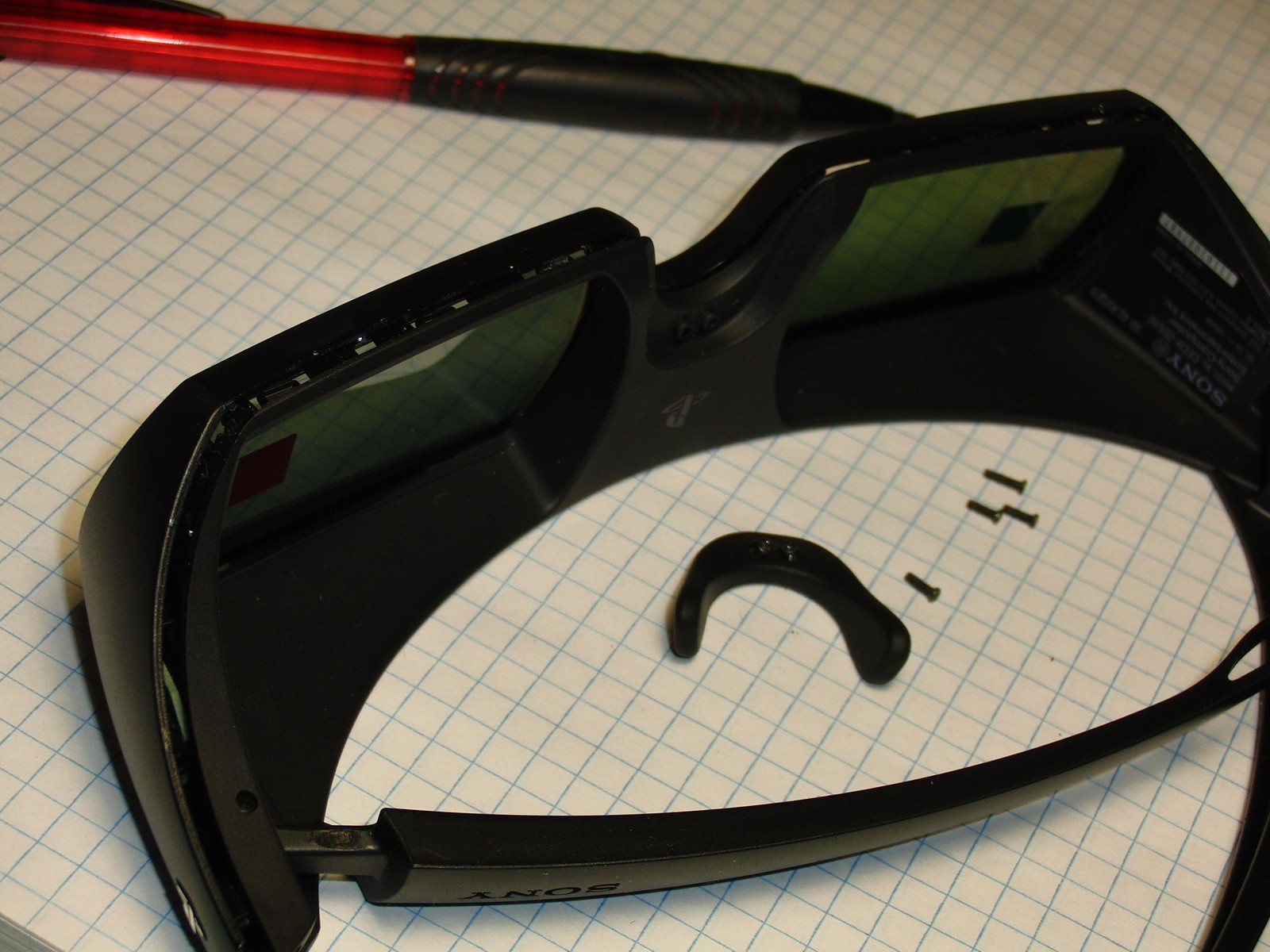
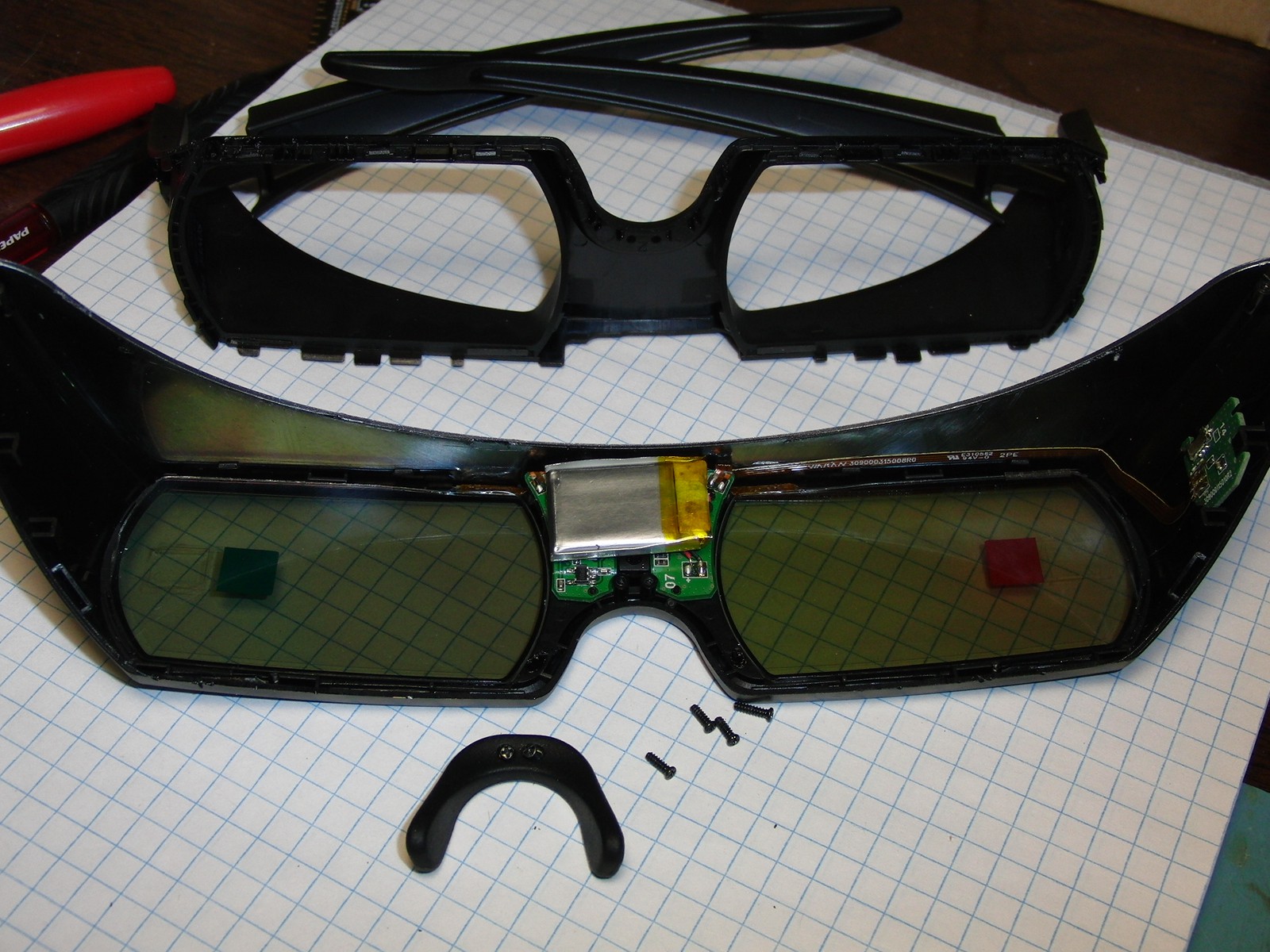 The "front" half of the frame contains all the worky bits. A small rechargeable li-po cell and main circuitboard with IR receiver are in the center over the nosepiece. On the right is the power switch.
The "front" half of the frame contains all the worky bits. A small rechargeable li-po cell and main circuitboard with IR receiver are in the center over the nosepiece. On the right is the power switch.